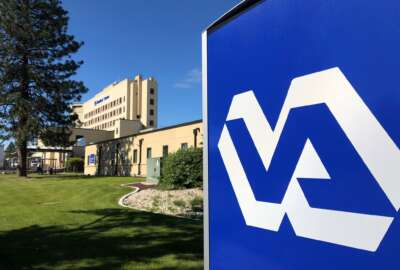VA’s struggling supply chain modernization initiative is under review
Defense Medical Logistics Standard Support failed to meet more than 40% of the needs staff at the Department of Veterans Affairs' first implementation site had...
The Department of Veterans Affairs is reassessing the future of its medical supply chain modernization program, one of several major efforts that Congress fears is teetering on the edge of the abyss.
Mike Parrish, principal executive director for VA’s Office of Acquisition, Logistics and Construction, said the department has multiple reviews ongoing, including one that will evaluate the current state of its medical supply chain modernization initiative and the solution VA is attempting to deploy now.
VA has made four supply chain modernization efforts since 2004. In 2018, VA chose to implement a 20-year-old system from the Defense Logistics Agency known as the Defense Medical Logistics Standard Support (DMLSS).
But like other major IT modernization initiatives that VA has ongoing, a recent inspector general report highlighted some problems with the DMLSS deployment at its first site, the Captain James A. Lovell Federal Health Care Center in North Chicago.
VA deployed DMLSS earlier this year, an implementation effort that cost $176 million.
But the department’s inspector general said DMLSS didn’t meet more than 40% of high-priority business needs that VA staff in North Chicago had identified as essential for a successful supply chain management system.
“This forced staff to develop workarounds just to maintain day-to-day operations,” Leigh Ann Searight, VA’s deputy inspector general, told the House Veterans Affairs Committee last week. “Notably, DMLSS did not meet any of Lovell’s data and information sharing requirements, could not adequately perform routine health care technology management functions and lacked key functions to maintain accountability of IT equipment.”
In addition, the IG said VA didn’t follow its acquisition framework requirements in implementing DMLSS. The Veterans Affairs Logistics Redesign (VALOR) program office, which is overseeing DMLSS implementation, lacks proper staffing and funding, Searight added. Six different managers have led that office since 2019.
VA’s supply chain management project has drawn criticism and concerns from Congress and auditors in the past, who have said the department lacks an overall strategy to tackle the complexities that come with implementing most major IT solutions.
“More money will not solve VA’s woes,” Shelby Oakley, director of contracting and national security acquisitions for the Government Accountability Office, told the House subcommittees. “Unless VA breaks its habit of putting action ahead of strategy, VA, Congress and veterans will not see the outcomes they want and expect from billions of dollars in investments.”
VA’s goals for its supply chain initiative are two-fold: One part is to modernize its inventory management system, which auditors and committee members agree is desperately needed. The other is to move to DLA’s existing contract vehicle and away from its current set of vendors.
But a Court of Federal Claims decision in July has all but stopped the move to the DLA’s medical and surgical contracts, leading members of Congress to question the purpose of proceeding with DMLSS at all.
“In a briefing before this hearing, a representative from the VA stated that the move to DLA contracts was primarily because VA is bad at contracting,” Rep. Frank Mrvan (D-Ind.), chairman of the technology modernization subcommittee, said. “I don’t think that’s an acceptable answer given that Congress appropriates billions to VA every year for every IT modernization effort that involves contracting.”
VA reiterated it’s reevaluating DMLSS as part of a broader review of supply chain and major acquisition projects.
Once VA completes that review, the department will develop a new analysis that describes its requirements for a modern medical supply chain management system, Parrish said. The analysis should describe what VA has today and what it’ll take to achieve the department’s broader supply chain goals.
“Then we’ll determine the technology solution,” Parrish said. “Technology should be the last decision in any process.”
An assessment of VA’s current supply chain operations is due to Parrish in mid-December. That assessment, he said, will identify how multiple, ongoing modernization initiatives — which include the electronic health record (EHR) modernization and financial management initiatives — relate and interact with each other.
From there, the department will develop a comprehensive supply chain strategy with a new set of metrics and goals.
At the same time, VA’s IT investment board, led by Parrish, the chief financial officer and chief information officer, is reviewing all major IT projects. The board recently adopted new criteria, which require that VA more comprehensively review major IT investments, worth more than $1 billion over its lifecycle or $200 million each year.
The department wouldn’t say whether it’s evaluating other supply chain inventory management solutions.
“I’m not going to say we’re not committed to it,” Parrish said of DMLSS. “However, we are reevaluating the theory of the case to make sure that it is still valid for us to move forward.”
Timing is another factor. The Defense Department is eventually supposed to adopt a modern version of DMLSS, known as LogiCole. But LogiCole isn’t supposed to be ready until 2025.
“Failure to modernize is not an option,” Mark Takano (D-Calif.), chairman of the House Veterans Affairs Committee, said. “This is a priority. Modernization is a priority of mine, and I want to make sure that we don’t continue with an antiquated system that doesn’t provide VA with insight into the supply needs across the country.”
Some committee members, however, say they’ve seen enough.
“VA leaders need to change course before the whole medical supply chain crashes on the rocks,” Rep. Tracey Mann (R-Kan.), ranking member of the oversight and investigations subcommittee, said last week. “It is not too late to do this, but time is running out and is of the essence. If they will not, I fear the VA supply chain will become more expensive but not more resilient.”
VA’s massive, 10-year, multi-billion-dollar electronic health record modernization effort has gotten the bulk of the attention from Congress within the last year.
But in many ways, the EHR and supply chain modernization efforts have notable similarities. Like DMLSS, VA has implemented its new electronic health record at one site, and the implementation had numerous flaws.
VA paused future deployments while new departmental leadership conducted a strategic review of the EHR rollout at its first go-live site. It’s taking a similar route now with its medical supply chain modernization initiative.
The department agreed with the IG’s assessment of the DMLSS rollout, and it committed to meeting auditors’ recommendations.
Parrish said VA is developing a new acquisition framework, which it will adopt in early 2022.
“We are working with [the Office of Acquisition and Logistics] to restructure and establish a more rigorous oversight process, as well as what we call the acquisition lifecycle framework, that’s going to be all encompassing for the enterprise for future and major acquisition programs,” he said. “We hope to roll that out in the next quarter or two at the latest.”
GAO said developing a new acquisition framework was a good first step, especially given VA’s track record within implementing major IT overhauls.
“Our ongoing work is showing that VA’s major acquisitions, several of the ones that we’re talking about, are not guided by a credible acquisition framework currently,” Oakley said. “I applaud Mr. Parrish and his efforts to try and bring more discipline to that. But what it has resulted in has been differing approaches for each program, lack of clear direction, limited ability to assess progress and hold folks accountable. You might say that it could leave the impression that VA’s managing these billions of dollars in investments in somewhat of a loosey-goosey fashion.”
Copyright © 2025 Federal News Network. All rights reserved. This website is not intended for users located within the European Economic Area.
Nicole Ogrysko is a reporter for Federal News Network focusing on the federal workforce and federal pay and benefits.
Follow @nogryskoWFED






